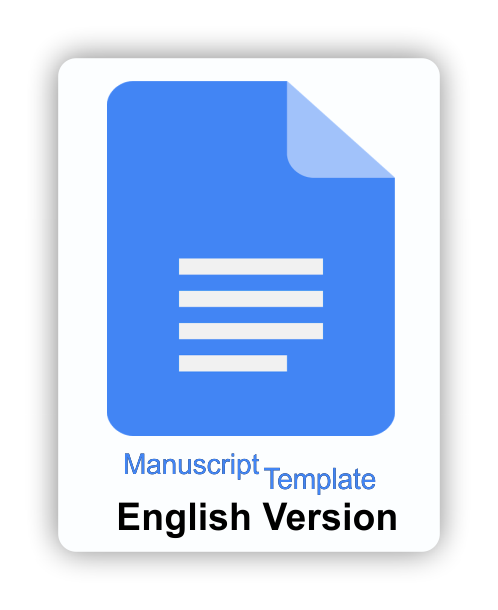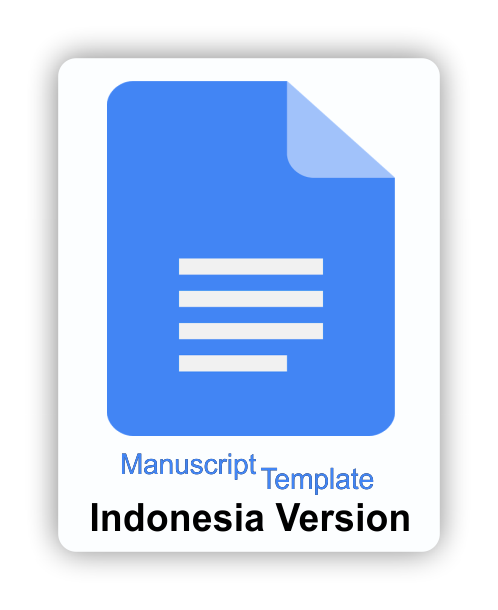Development of virtual reality on material: Archimedes' Law (VIRMA) to improve student learning outcomes
Downloads
Abdillah, F., Riyana, C., & Alinawati, M. (2018). Pengaruh penggunaan media virtual reality terhadap kemampuan analisis siswa pada pembelajaran ilmu pengetahuan alam kelas viii sekolah menengah pertama. EDUTECHNOLOGIA, 2(1), 35–44.
Allcoat, D., & von Mí¼hlenen, A. (2018). Learning in virtual reality: Effects on performance, emotion and engagement. Research in Learning Technology, 26, 1–13. https://doi.org/10.25304/rlt.v26.2140
Anjelin, F. N., Ailiyah, F., Kurniawan, B. R., & Kholifah, M. N. (2021). Identifikasi penguasaan konsep materi Hukum Archimedes dan Hukum Pascal berbantuan Quizizz. EXPERIMENT: Journal of Science Education, 1(1), 19–27. http://ejournal.uin-malang.ac.id/index.php/experiment/article/view/11114
Azizah, R., Yuliati, L., & Latifah, E. (2015). Kesulitan pemecahan masalah Fisika pada siswa sma. Jurnal Penelitian Fisika Dan Aplikasinya (JPFA), 5(2), 44–50. https://doi.org/10.26740/jpfa.v5n2.p44-50
Branch, R. M. (2009). Instructional design: The ADDIE approach. Springer New York.
Campos, E., Hidrogo, I., & Zavala, G. (2022). Impact of virtual reality use on the teaching and learning of vectors. Frontiers in Education, 7, 1–15. https://doi.org/10.3389/feduc.2022.965640
Daun, N. S., Helmi, H., & Haris, A. (2020). Diagnosis kesulitan belajar Fisika peserta didik di SMA Negeri 1 Bontomarannu. 37–40.
Devianti, W., & Anggaryani, M. (2022). Virtual museum of tsunami project for increasing awareness of disaster risk potential in Physics class. Berkala Ilmiah Pendidikan Fisika, 10(3), 271–285. https://doi.org/10.20527/bipf.v10i3.13380
Dewi, L. R., & Anggaryani, M. (2020). Pembuatan media pembelajaran Fisika dengan augmented reality berbasis android pada materi alat optik. IPF: Inovasi Pendidikan Fisika, 9(3), 369–376. https://doi.org/10.26740/ipf.v9n3.p369-376
Dewi, R. K. (2020). Pemanafaatan media 3 dimensi berbasis virtual reality untuk meningkatkan minat dan hasil belajar IPA siswa kelas v sd. Jurnal Pendidikan, 21(1), 28–37. https://doi.org/10.33830/jp.v21i1.732.2020
Geng, Y., Yang, J., & Seyedebrahimi, M. (2022). Using VR in Science subjects: Popularity and public attitudes on Twitter. 2022 IEEE International Conference on E-Business Engineering (ICEBE), 154–158. https://doi.org/10.1109/ICEBE55470.2022.00035
Hafi, N. N., & Supardiyono, S. (2018). Pengembangan buku saku fisika dengan teknologi augmented reality berbasis android pada materi pemanasan global. Inovasi Pendidikan Fisika, 7(2). https://garuda.kemdikbud.go.id/documents/detail/1577671
Hake, R. R. (1998). Interactive-engagement versus traditional methods: A six-thousand-student survey of mechanics test data for introductory physics courses. American Journal of Physics, 66(1), 64–74. https://doi.org/10.1119/1.18809
Haqiqi, A. K., & Sa'adah, L. (2018). Deskripsi kesulitan belajar materi Fisika pada siswa sekolah menengah pertama (SMP) di Kota Semarang. THABIEA : JOURNAL OF NATURAL SCIENCE TEACHING, 1(1), 39–43. https://doi.org/10.21043/thabiea.v1i1.4044
Hwang, Y., Shin, D., & Lee, H. (2023). Students' perception on immersive learning through 2D and 3D metaverse platforms. Educational Technology Research and Development, 1–22. https://doi.org/10.1007/s11423-023-10238-9
Jeong, J., Chen, Q., Kim, N., & Lee, H. (2022). Virtual reality collaborative platform for e-learning: Analysis of student engagement and perceptions. 19–28. https://doi.org/10.52842/conf.caadria.2022.1.019
Laila, K., & Hendriyanto. (2021). Menyiapkan pendidik profesional di era society 5.0. http://ditpsd.kemdikbud.go.id/artikel/detail/menyiapkan-pendidik-profesional-di-era-society-50
Lee, H., & Hwang, Y. (2022). Technology-enhanced education through VR-making and metaverse-linking to foster teacher readiness and sustainable learning. Sustainability, 14(8), 1–21. https://doi.org/10.3390/su14084786
Lege, R., & Bonner, E. (2020). Virtual reality in education: The promise, progress, and challenge. The JALT CALL Journal, 16(3), 167–180. https://doi.org/10.29140/jaltcall.v16n3.388
Lestari, K. M., Rusnayati, H., & Wijaya, A. F. C. (2017). Profil hambatan belajar epistimologis siswa kelas viii smp pada materi tekanan zat cair melalui tes kemampuan responden. PROSIDING SEMINAR NASIONAL FISIKA (E-JOURNAL) SNF2017 UNJ, 31–38. https://doi.org/10.21009/03.SNF2017.01.OER.05
Nurhasanah, A., Pribadi, R. A., & Nur, M. D. (2021). Analisis Kurikulum 2013. Didaktik : Jurnal Ilmiah PGSD STKIP Subang, 7(02), 484–493. https://doi.org/10.36989/didaktik.v7i02.239
Olivas Castellanos, E. C., De Gunther, L., Vazquez Paz, F. M., Lerma Ramos, M. T., & Rivera Garrido, O. D. (2022). The Sciences through pixels: Virtual reality as an innovation in the learning outcome in higher education in Northwestern Mexico. Proceedings of the 2022 6th International Conference on Education and E-Learning, 275–280. https://doi.org/10.1145/3578837.3578877
Pirker, J., Lesjak, I., & Gí¼tl, C. (2017). An educational physics laboratory in mobile versus room scale virtual reality – A comparative study. International Journal of Online Engineering (IJOE), 13(08), 106. https://doi.org/10.3991/ijoe.v13i08.7371
Riduwan, M. B. A. (2007). Skala pengukuran variabel-variabel penelitian. Alfabeta.
Risdianto, E. (2019). Analisis pendidikan Indonesia di era revolusi industri 4.0. 1–16. https://www.researchgate.net/profile/Eko-Risdianto/publication/332415017_ANALISIS_PENDIDIKAN_INDONESIA_DI_ERA_REVOLUSI_INDUSTRI_40/links/5cb4509b4585156cd7993519/ANALISIS-PENDIDIKAN-INDONESIA-DI-ERA-REVOLUSI-INDUSTRI-40.pdf
Rohmayanti, R. R., Kusairi, S., & Hidayat, A. (2020). Penguasaan konsep Hukum Archimedes pada siswa kelas xi dan xii sma. (JRPF) Jurnal Riset Pendidikan Fisika, 5(2), 92–98. http://journal2.um.ac.id/index.php/jrpf/article/view/15575
Saragih, N. D. (2022). Menyiapkan pendidikan dalam pembelajaran di era society 5.0.
Sugiyono. (2009). Metode penelitian pendidikan pendekatan kuantitatif, kualitatif, dan r&d. Alfabeta.
Sulaiman, H., Ibrahim, N., Latif, R. A., & Yusof, A. M. (2020). Students and teachers' perception on future use of virtual reality (VR) in learning Physics: A preliminary analysis. 2020 IEEE Conference on E-Learning, e-Management and e-Services (IC3e), 1–6. https://doi.org/10.1109/IC3e50159.2020.9288464
Sulistyowati, S., & Rachman, A. (2017). Pemanfaatan teknologi 3D virtual reality pada pembelajaran Matematika tingkat sekolah dasar. Jurnal Ilmiah NERO, 3(1), 37–44. https://nero.trunojoyo.ac.id/index.php/nero/article/view/71
Suryani, N. (2016). Pengembangan media pembelajaran berbasis IT. Prosiding Seminar Nasional Teknologi Pendidikan, 1–14. https://jurnal.fkip.uns.ac.id/index.php/psdtp/article/download/9033/6712
Widodo, L., Yuliati, L., & Parno, P. (2018). Penguasaan konsep pada Hukum Archimedes siswa sma. Jurnal Pendidikan: Teori, Penelitian, Dan Pengembangan, 3(6), 745–750. http://journal.um.ac.id/index.php/jptpp/article/view/11138
Zatarain"Cabada, R., Barrón"Estrada, M. L., Cárdenas"Sainz, B. A., & Chavez"Echeagaray, M. E. (2023). Experiences of web"based extended reality technologies for Physics education. Computer Applications in Engineering Education, 31(1), 63–82. https://doi.org/10.1002/cae.22571
The journal allows the author(s) to hold the copyright without restrictions. Finally, the journal allows the author(s) to retain publishing rights without restrictions
 | Jurnal Inovasi Teknologi Pendidikan by http://journal.uny.ac.id/index.php/jitp is licensed under a Creative Commons Attribution-ShareAlike 4.0 International License. |























